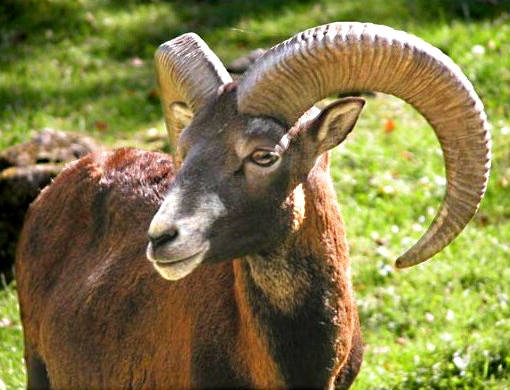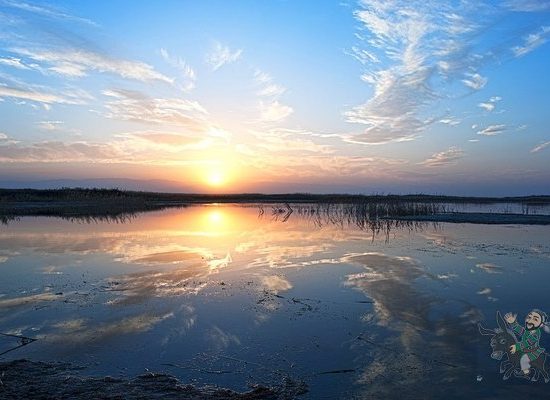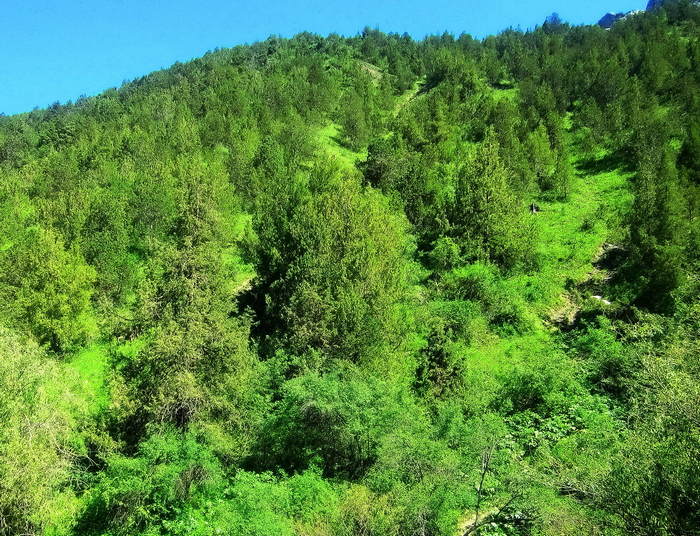Ecological Tour
Rout: Tashkent – Charvak reservoir (SPA-hotel) – Urgench (Khiva) – Bukhara – yurt camp (Lake Aidarkul) – Samarkand – Tashkent
14 days/ 13 nights
Tour operator « AL SAMARKAND TRAVEL » We invite you to an exceptional journey through the most picturesque and unique country of Central Asia – Uzbekistan.
Kharezm – Khiva
Khiva — city — open-air museum is located on the territory of the Kyzyl-Kum desert, not far from the Amu-Darya River. According to ancient legend, the city was named in honor of the well “Kheyvak”, which was dug by Shem, the son of the late Noah.
The well has survived to this day, but it is on private property and is closed for display. On the territory of Khiva there is an “inner city” – Ichan – Kala (26 hectares), formed around the citadel.
It is surrounded by powerful fortress walls (height – 10 m, length – 2200 m.), being an example of medieval fortifications. Within the walls of Icahn – closed almost all architectural objects of the show, which changed the historical appearance of the city XVII – XIX centuries.
Honorable Bukhara
“Buhoro-i-Sharif” (“Noble Bukhara”) has secured the respect of the spiritual and artistic central capital of Asia since the 17th century. The first mention of the city in the holy book “Avesta” under the name “Vihar”, which means “monastery” in Sanskrit.
After the domination of the Tajik dynasty of Samanids (IX – X centuries), perhaps the greatest prosperity reaches Bukhara in the second half of the XVI century. The central part of the “old” city forms an integral architectural ensemble of the XVI – XIX centuries.
In Bukhara and on its territory there are more than 500 architectural monuments belonging to different epochs and preserved up to nowadays. Narrow streets in the old parts of the city even nowadays convey the atmosphere of the middle ages.
Lake Aidarkul – Yurt Camp
Lake Aidarkul is an oasis in the thunderstorms, a marvelous blue space, a conference in the golden frame of the sands of the Kyzyl-Kum desert. Its fate is interesting. For a long time it lay alone within the framework of solonchak lowlands.
The water in it was quite salty, as evidenced by its name – Tuzkan (Uzbek: Tuz – salt). The shores of this lake, doomed to slow drying up, were also lifeless. However, in the spring of 1969, as a result of an unusually high flood on the Syrdarya River, its waters rushed into the Arnasay spill and rushed westward deep into the sands, filled the structural salt marsh depression Aidar and, joining the waters of Lake Tuzkan, turned it into a part of the skull of the reservoir, stretching along the southern edge of the Kyzylkum Desert for almost 200 km.
The waters of the Syr Darya opened new life in the dying lake. Its surface increased many times, the water became more fresh, the shores turned green, many fish and waterfowl appeared. On the winding shores of the new reservoirs there are many gentle shoals and shallow lagoons.
Among the bluish expanse of small golden islands are large sand dunes surrounded by water. Their shores are overgrown with sedges and are home to many birds. On some islands you can see colonies of white pelicans. Water bodies are rich in fish. There are carp, zherekh, zander, pike.
Samarkand – the Pearl of the East
Samarkand is more than 2700 years old. “Pride of Ost” – so called it surpisers and poets of the past. It has witnessed many historical events. Its walls resisted the armies of Alexander the Great (the end of the IV century BC), the troops of the Arab Caliphate (VIII century), but the city was destroyed to the ground by the hordes of Genghis Khan (XIII century) and could not revive in its former place.
In XIV-XV centuries Samarkand became the capital of the formidable Amir Timur (Tamerlane), who became his capital Mira. Now it is the second major city in the Republic of Uzbekistan, where “gray antiquity” and modernity peacefully neighbor.
Shakhrisabz – Green City …
In 100 km from Samarkanda is located the city of Shakhrisabz (“Green City”) – the birthplace of Amir Timur (Tamerlane). In the XIV-XV centuries it was the main city of the Kesh region, the fiefdom of the Turkic-Mongolian tribe “Barlas”, which was joined by the formidable Tamerlane.
Under Timur, Shakhrisabz experienced unprecedented color and influence with luxurious monumental buildings. Since the XVI century the city gradually falls into decay. the beginning of the XIX century is the residence of the local bey. Now it is a modern city with 25 centuries of past.
The way to the city runs along the picturesque terrain of the foothills and spurs of the Zeravshan range (Pamir-Alai mountain system). Then there is an ascent along the serpentine road to the pass Takhta-Karacha (1675 m.). From the height of the pass you can see a bluish-green spot of oasis in the upper reaches of the Kashkadarya River, where Shakhrisabz is located.
Tashkent is the capital of Uzbekistan
It is located between the western foothills of the Tien Shan mountain system and the Syr Darya River. It is a modern metropolis, which is the means of political and economic life of the Republic of Uzbekistan.
The first mention of Tashkent (named at that time as Shash) dates back to the II century BC. Wars and natural disasters destroyed many historical monuments of different eras. After the devastating earthquake in 1966, the city was completely in ruins and practically rebuilt. New buildings decorated with mosaics and stucco decorations in Uzbek style give Tashkent an attractive and interesting look.
SUMMARY:
- This itinerary operates from April 1 through October 1 (seasonal yurt camping);
- Maximum number of people in the group – 18
For the active part of the route it is necessary to have:
- comfortable shoes on a thickened platform,
- hats to protect from direct sunlight,
- sunglasses,
- bathing suits,
- sunscreen and mosquito repellent,
- warm clothes for the evening.
The programs of stay on the route of the 1st and the last day depend on the time of approach to the beginning of the tour and the time of departure from the final point, so may vary.














